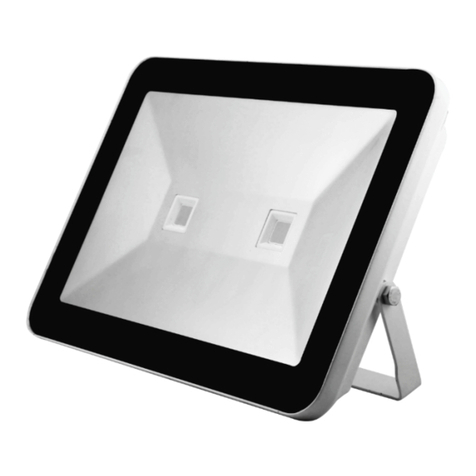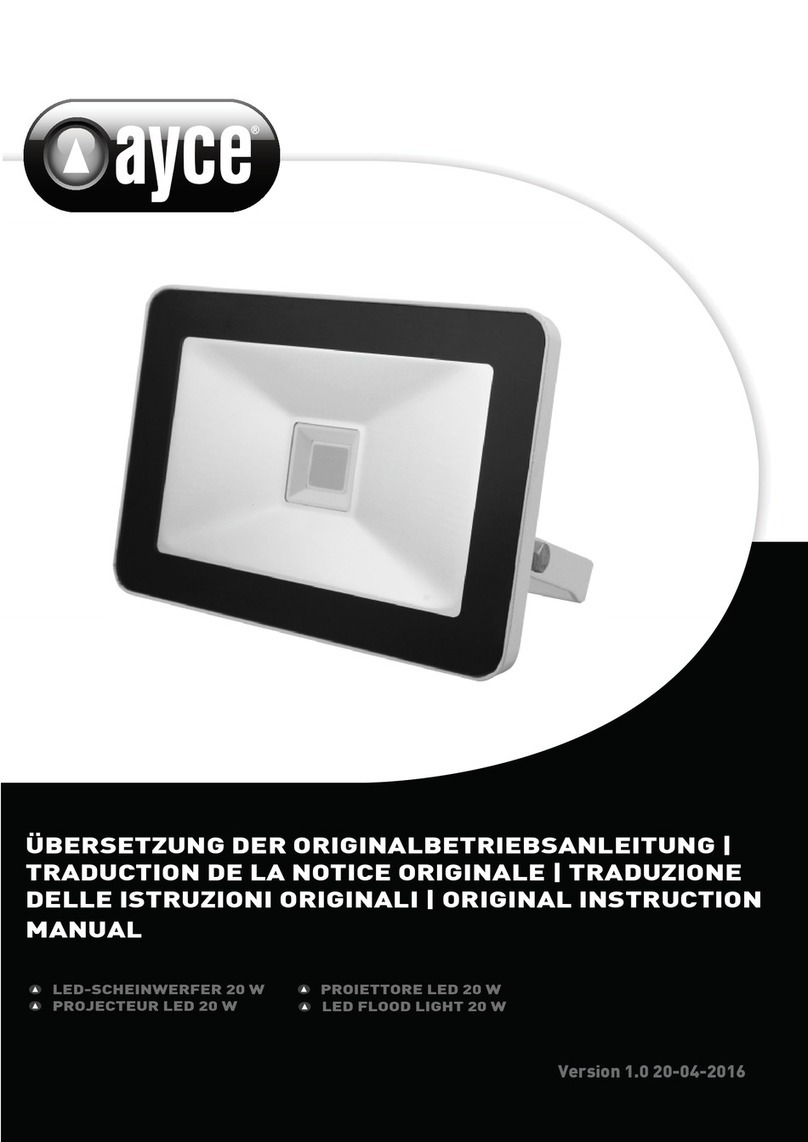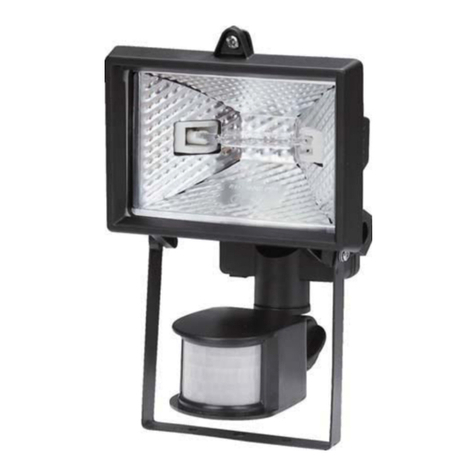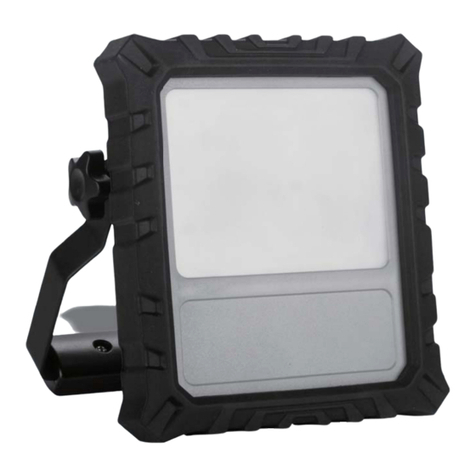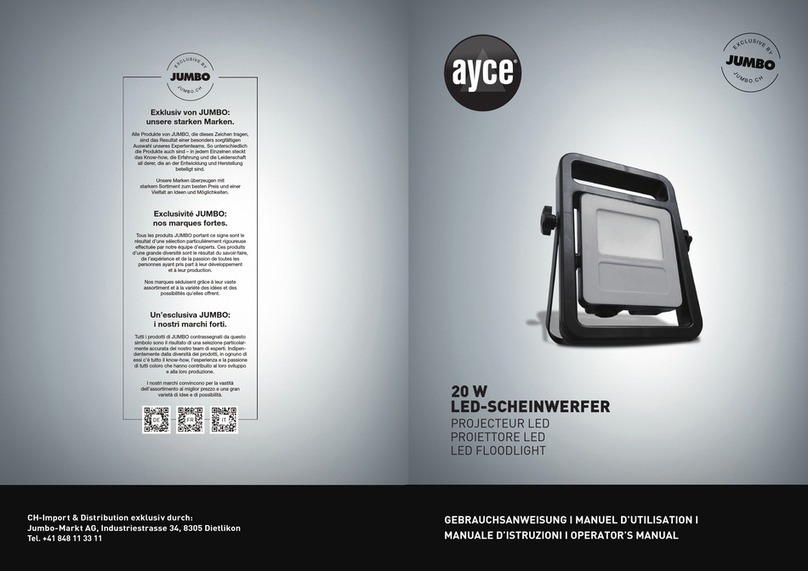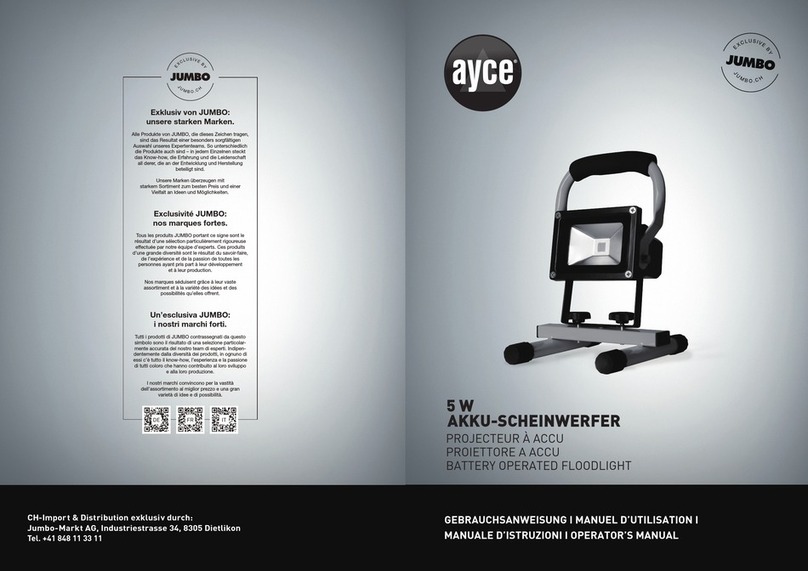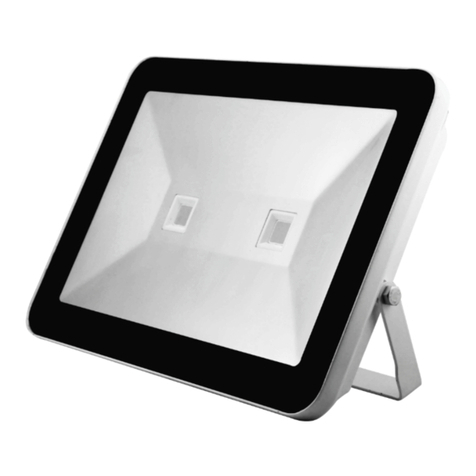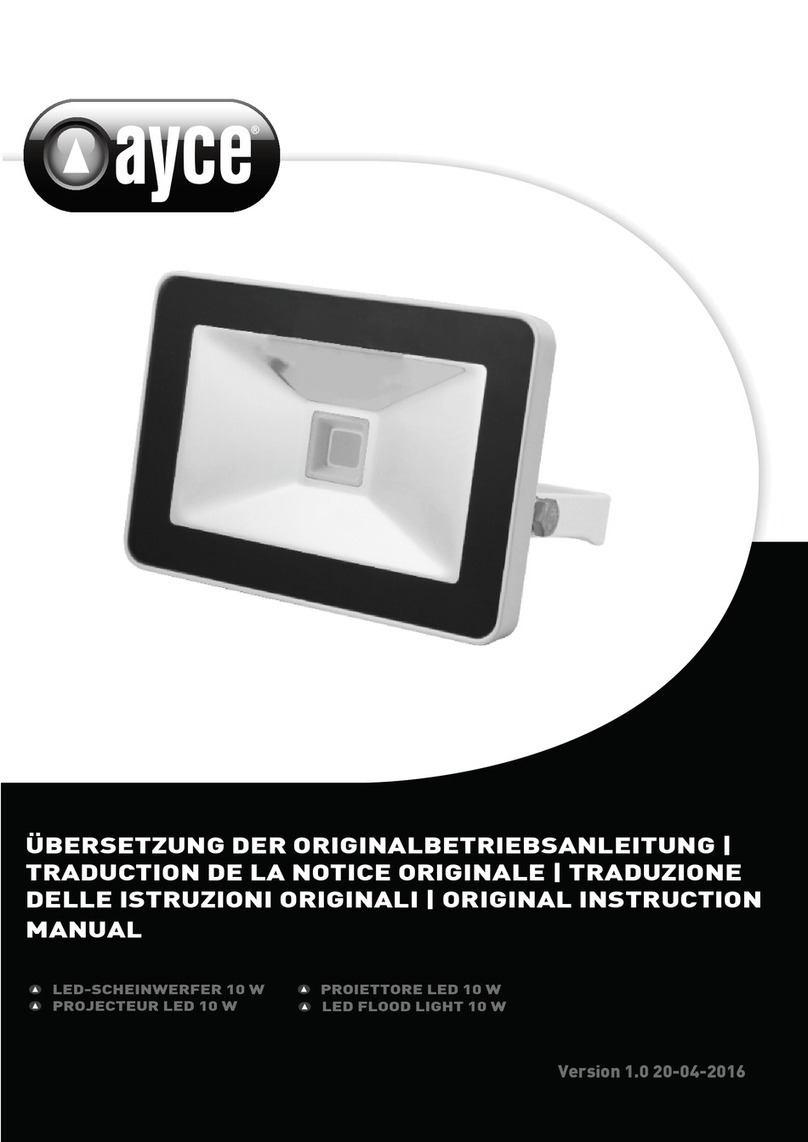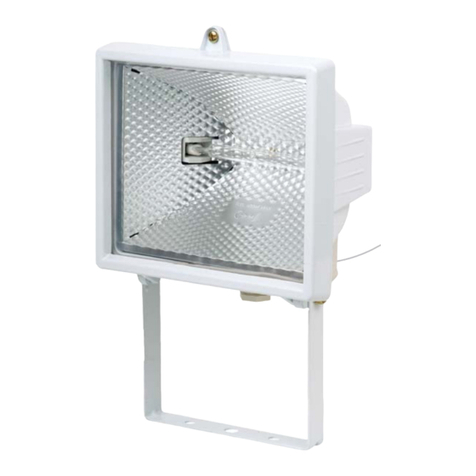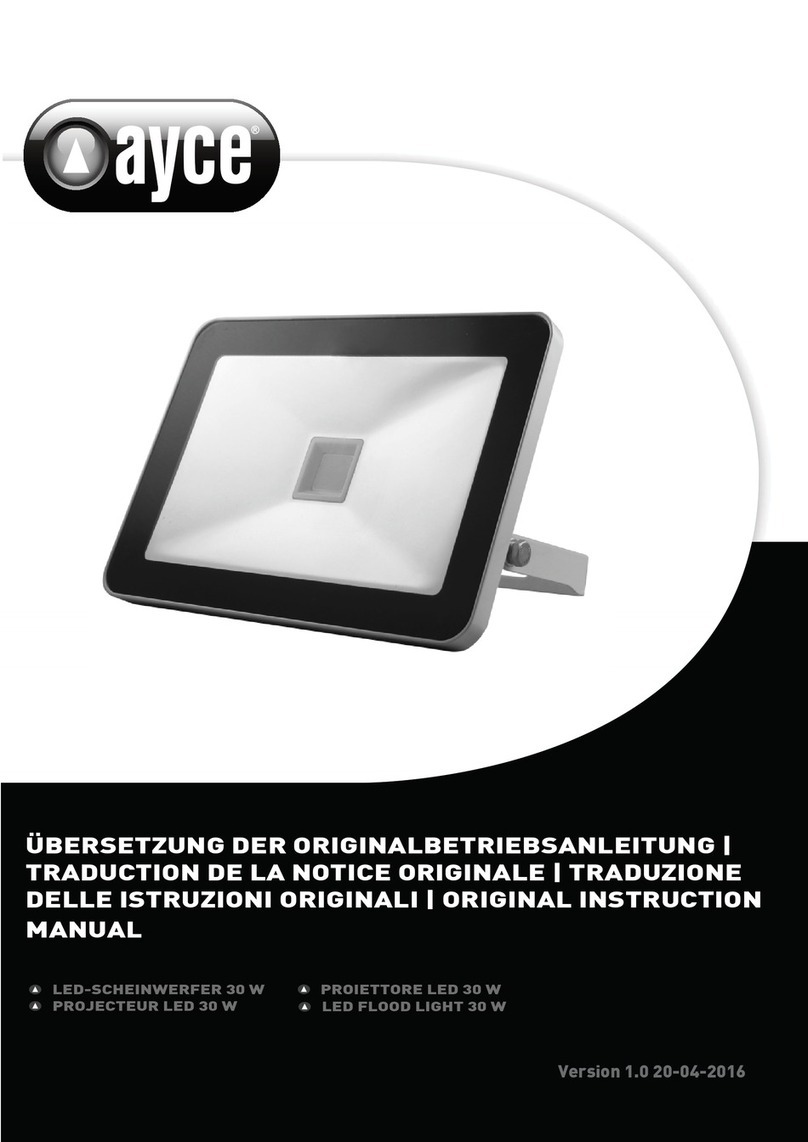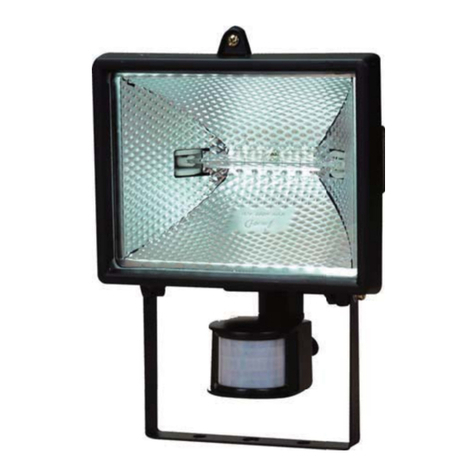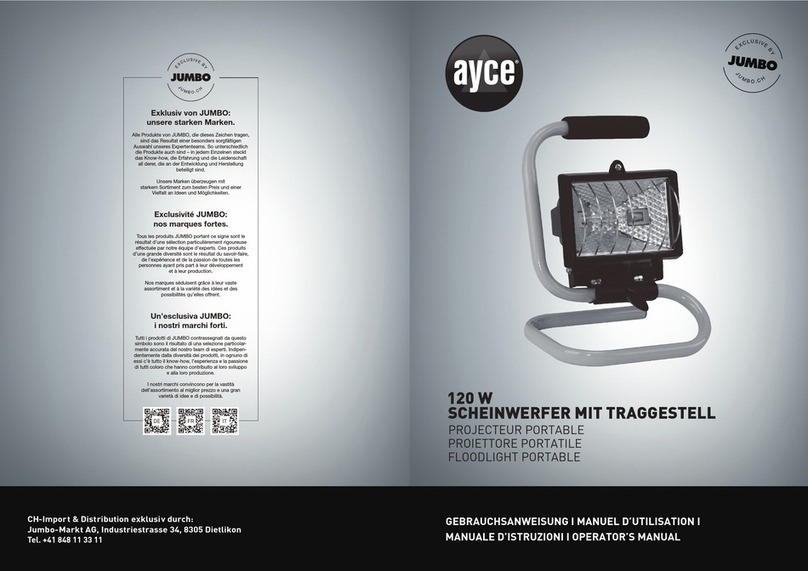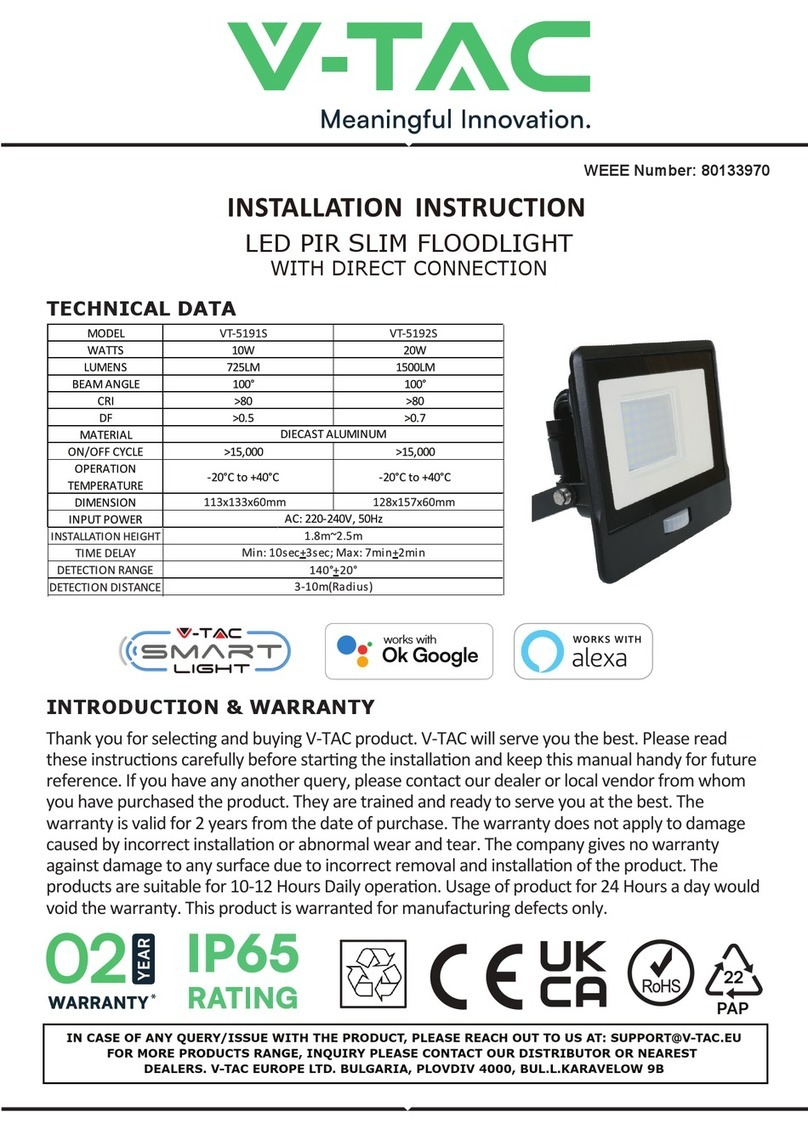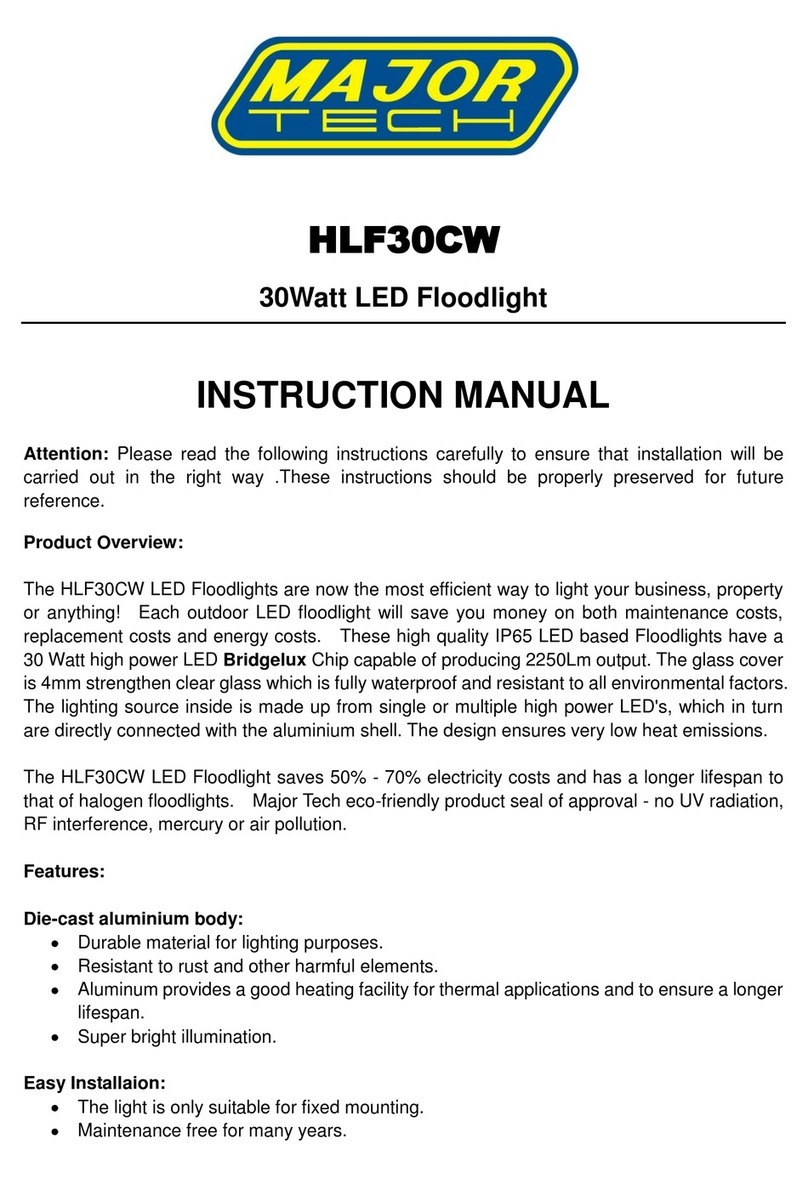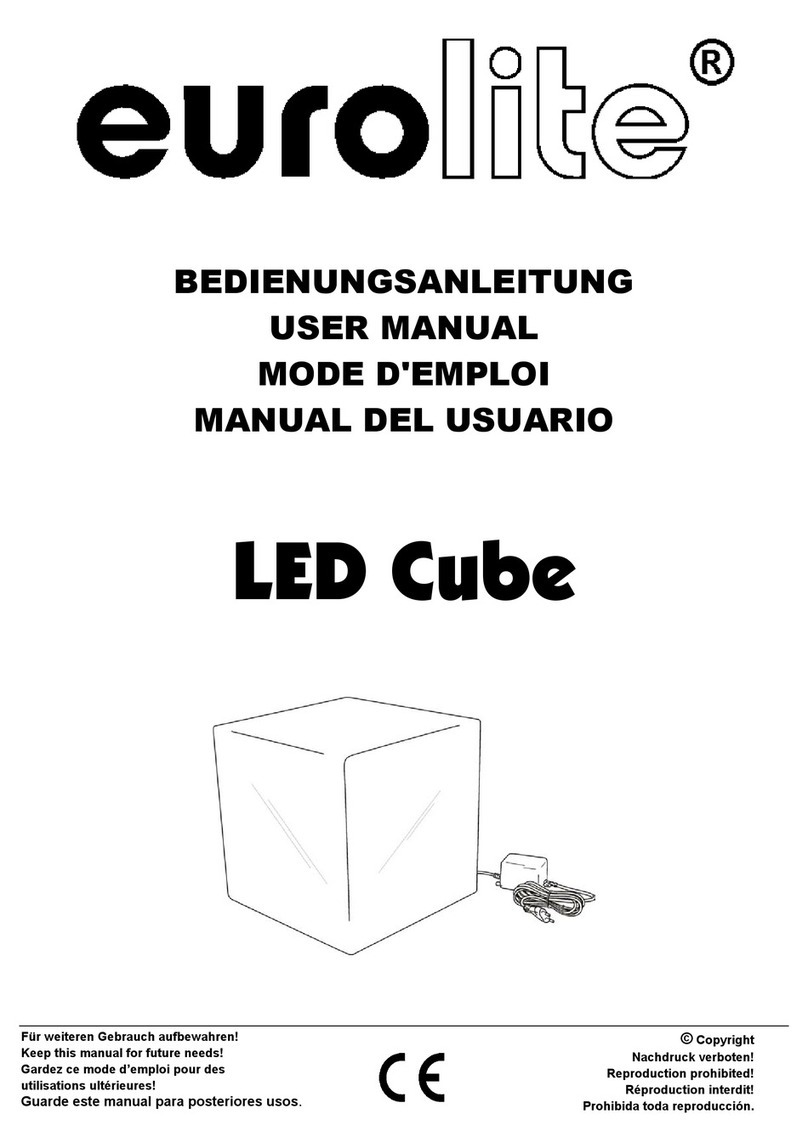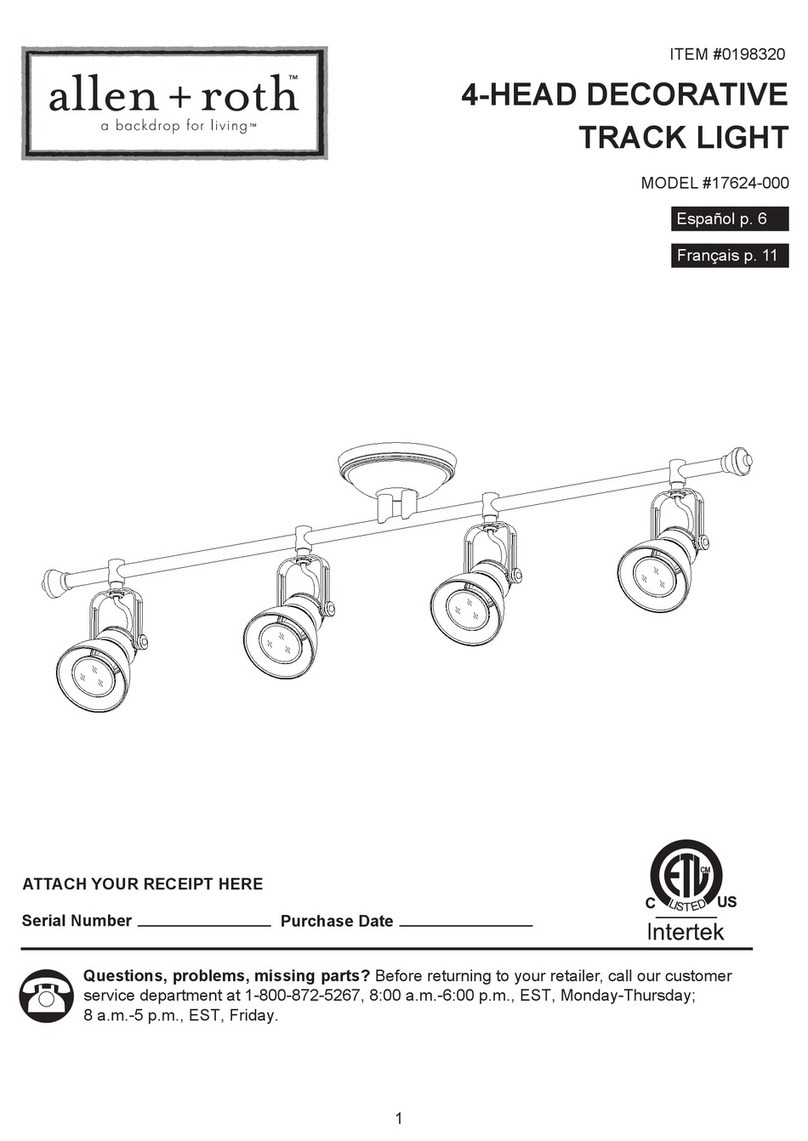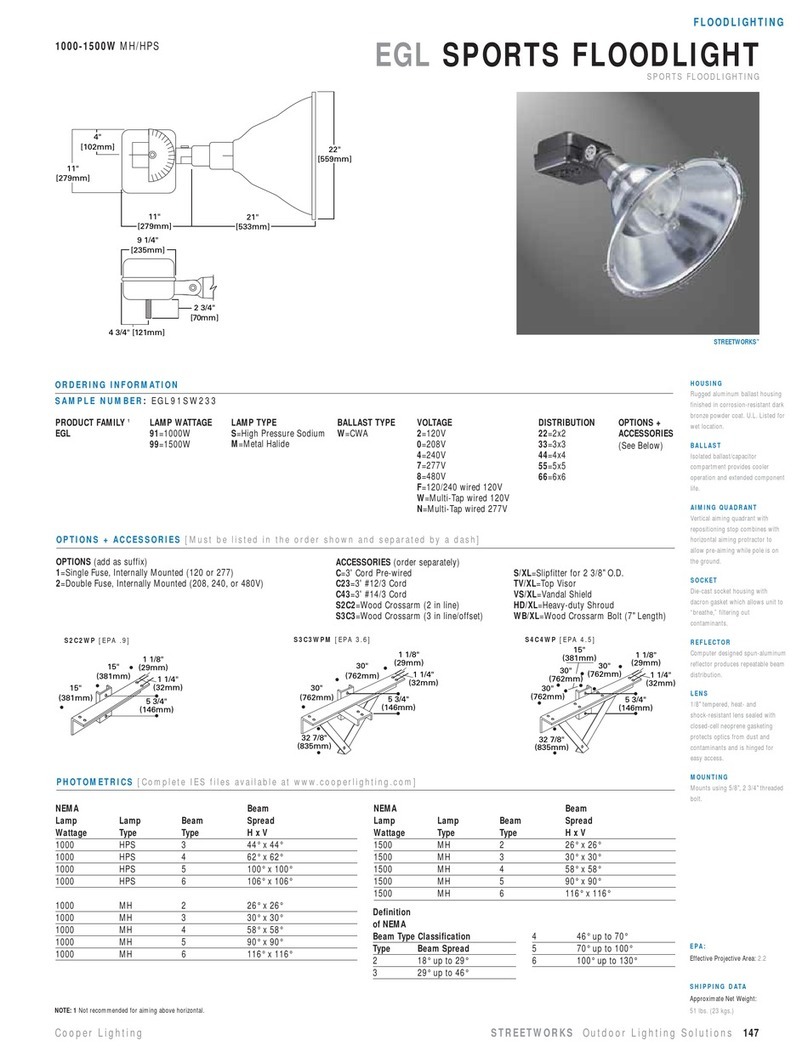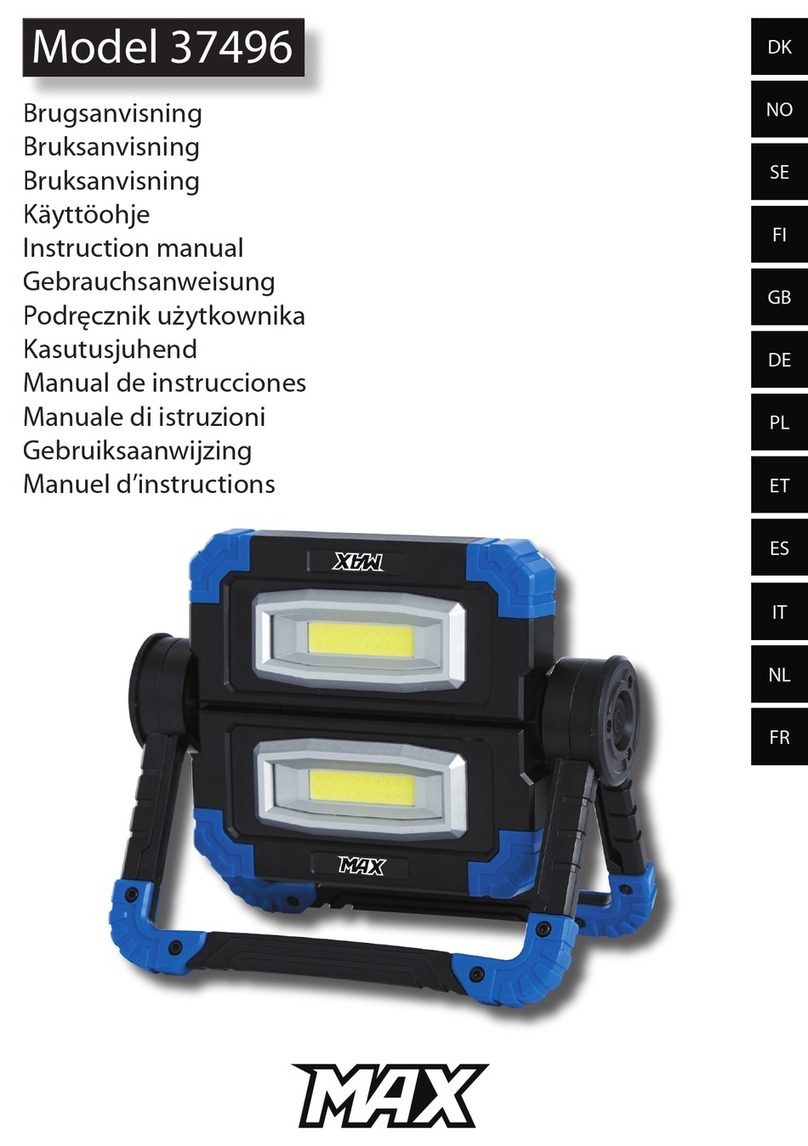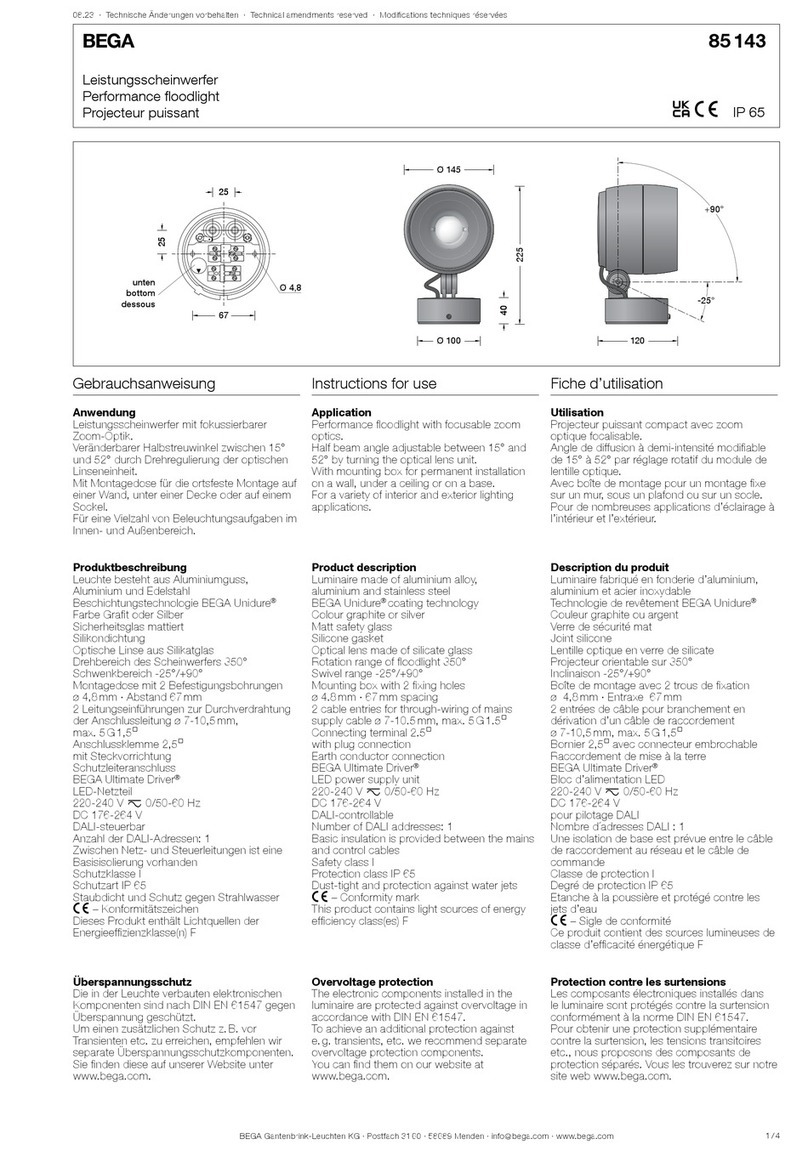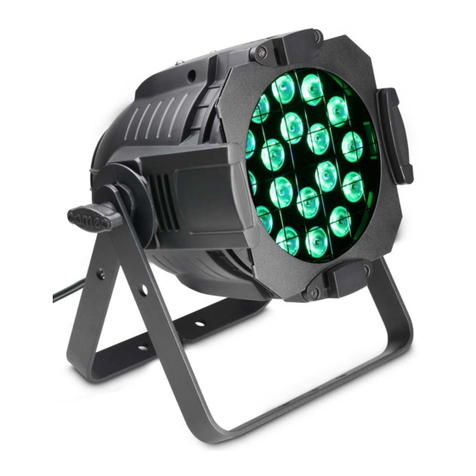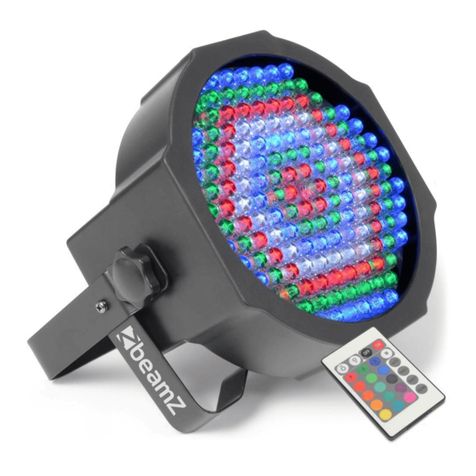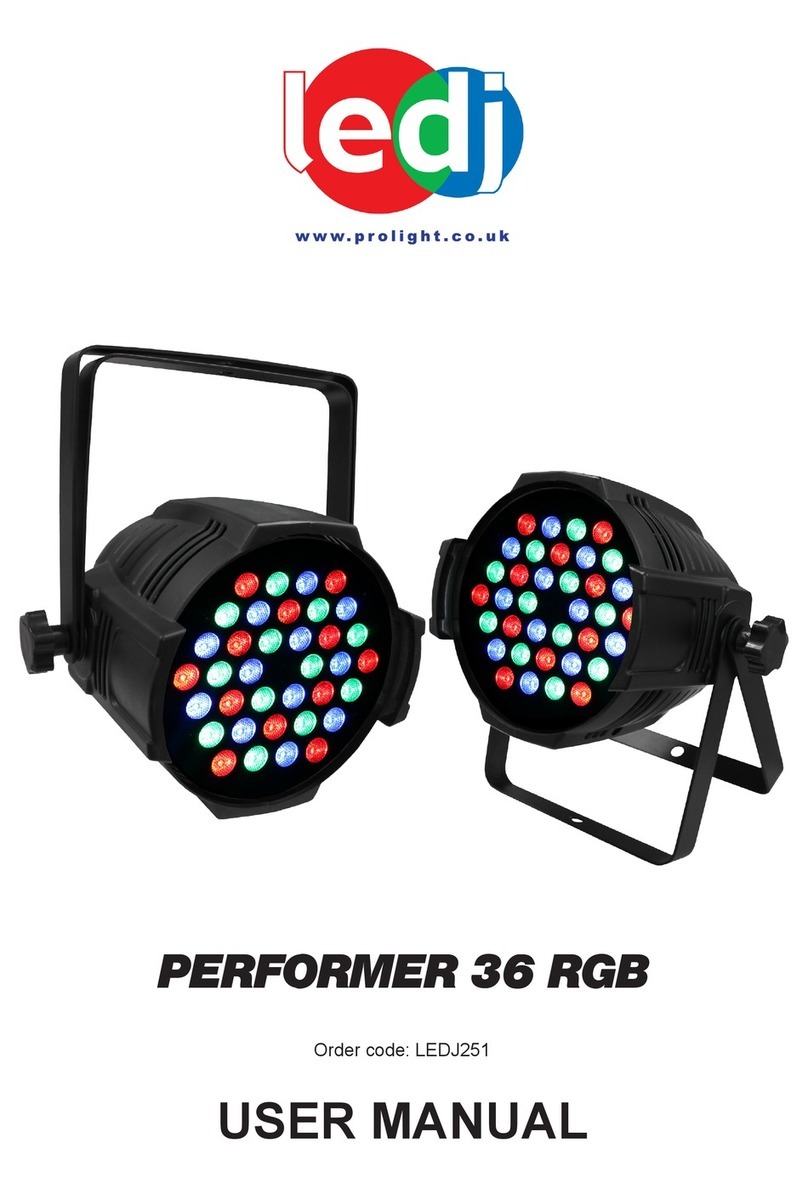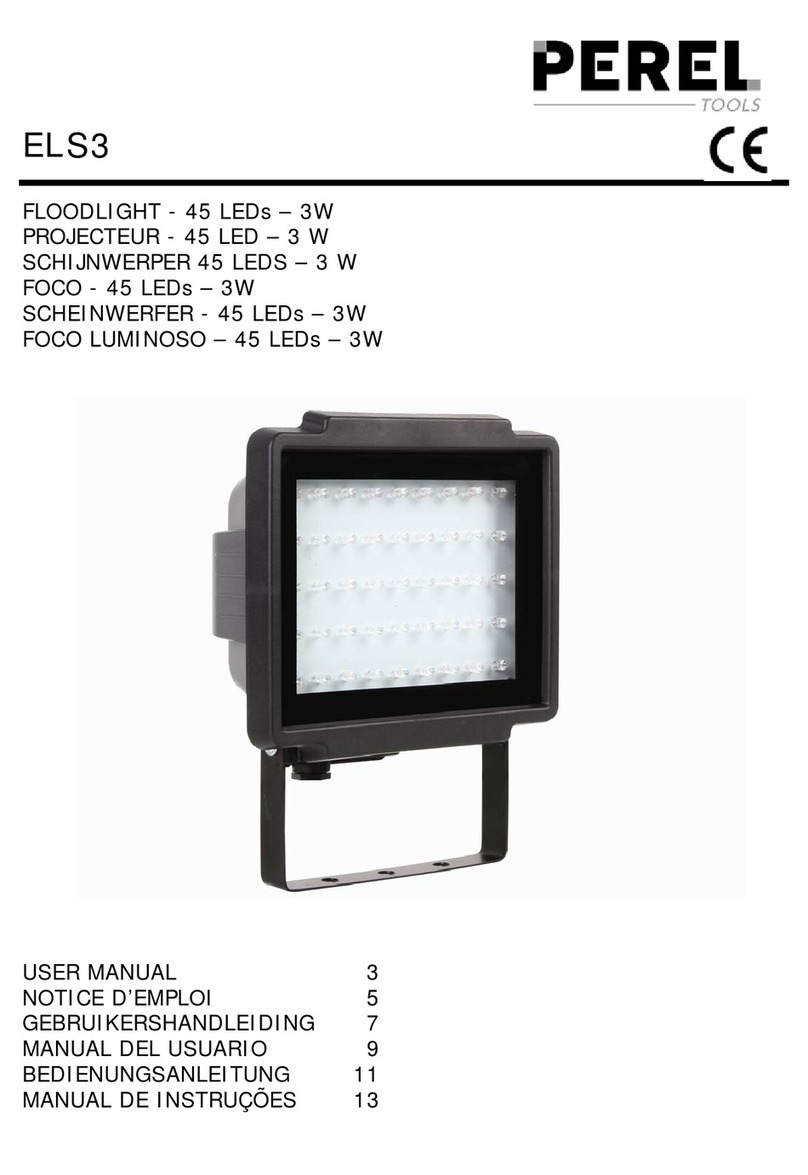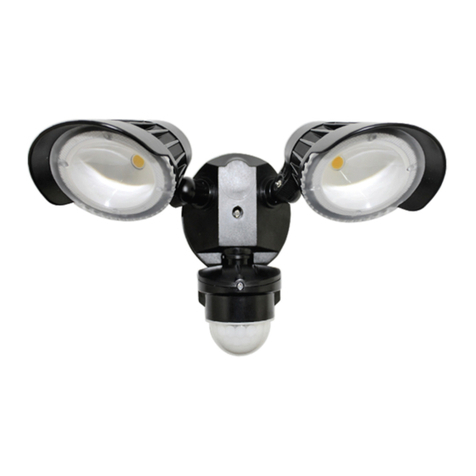
FEHLERBEHEBUNG:
Licht wird während des normalen Betriebs nicht aktiviert. Abhilfe: Vergewissern Sie sich, dass:
1. der Hauptschalter des Geräts sich in der Position AUTO befindet.
2. die Helligkeitseinstellung nicht zu weit Richtung ( ) eingestellt ist.
3. der Bewegungssensor in Richtung der ankommenden Bewegung ausgerichtet ist.
4. die Solarzelle in einem solchen Winkel eingestellt ist, dass sie tagsüber möglichst viel direktes Sonnenlicht bekommt.
5. die Lampe nicht defekt ist.
6. die Batterieladung nicht zu gering ist (3 sonnige Tage lang – bei Schalter in OFF-Position – laden).
Licht schaltet sich während des Tages ein. Abhilfe:
1. Stellen Sie sicher, dass die Helligkeitsregelung nicht zu weit in Richtung ( ) eingestellt wird.
Das Licht blinkt schnell. Abhilfe:
1. Anpassung der Zeiteinstellung.
2. Batterie schwach (3 sonnige Tage lang laden – Schalter in Position OFF).
Licht ist nicht so hell wie üblich. Abhilfe:
1. Batterie schwach (3 sonnige Tage lang laden – Schalter in Position OFF).
D
04
SENSOREINSTELLUNG:
Das Helligkeitssteuermodul verfügt über eine eingebaute Sensorvorrichtung (Photozelle), die Tageslicht
und Dunkelheit erkennt. Die Position ( ) legt fest, dass der Ladevorgang Tag und Nacht vom Infrarotsen-
sor eingeschaltet wird, die Position ( ) legt fest, dass der Ladevorgang nur nachts vom Infrarotsensor
aktiviert wird. Mit dem LUX-Knopf können Sie einstellen, dass die Einheit beim gewünschten Helligkeits-
grad aktiviert wird. Hinweis: Wenn er sich in der Tagesposition befindet, schaltet das Gerät sich ein, wenn
es draussen zu hell ist; drehen Sie den Regler in Richtung ( ). Wenn das Licht sich allerdings wegen der
Strassenbeleuchtung oder einer hellen Leuchte am Haus nicht einschaltet, drehen Sie diesen Regler in
Richtung ( ).
Drehen Sie den Einstellregler für ZEIT in Richtung „-“ oder „+“, um einzustellen, wie lange das Licht
eingeschaltet bleiben soll (von ca. 10 Sekunden bis 1 Minute).
Hinweis: Wenn die Lampe eingeschaltet ist und eine neue Bewegung festgestellt wird, wird die Beleuch-
tungsdauer ab der letzten festgestellten Bewegung neu berechnet.
Einstellung der Empfindlichkeit:
Mit Empfindlichkeit ist die maximale Entfernung gemeint, in der der Infrarotsensor durch die Bewegung
eines Körpers ausgelöst werden kann (12 Meter). Durch Drehen des SENS-Knopfes von (+) nach (-) wird
die Empfindlichkeit verringert.
